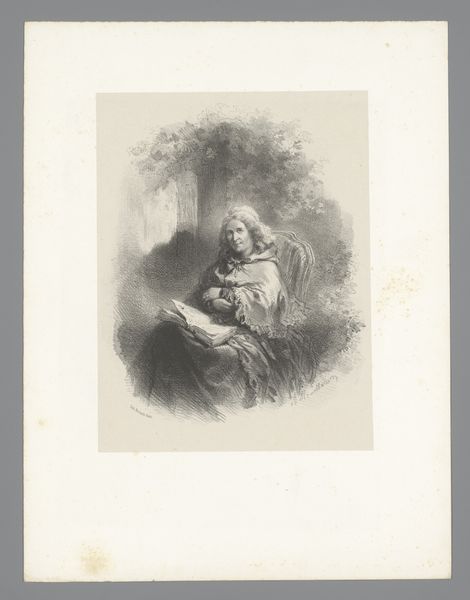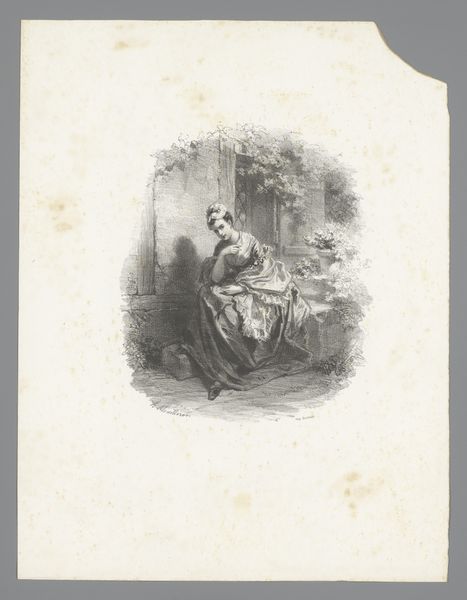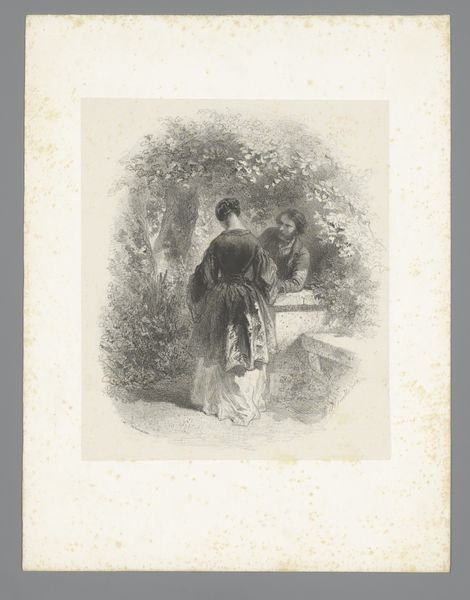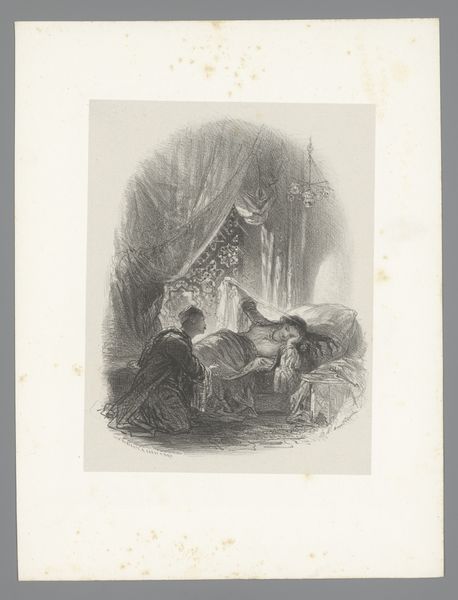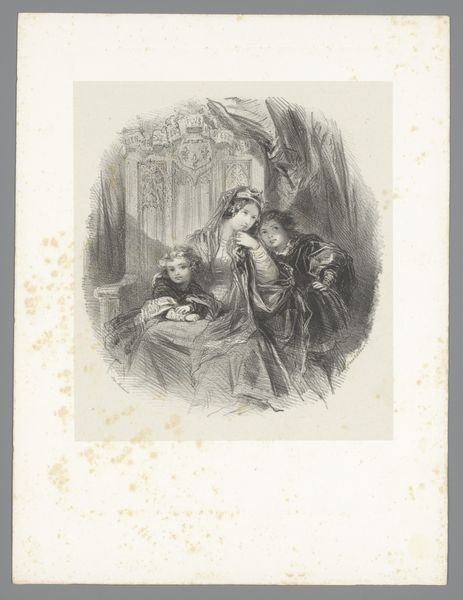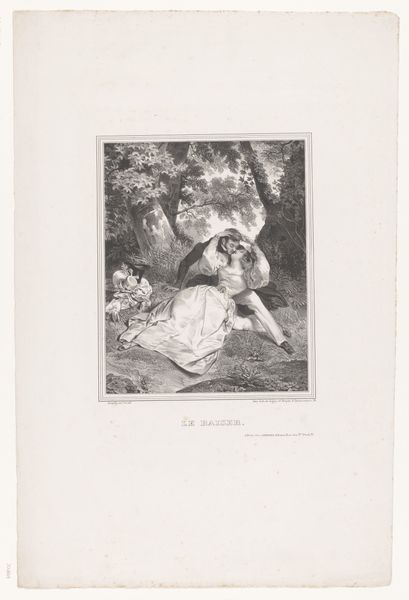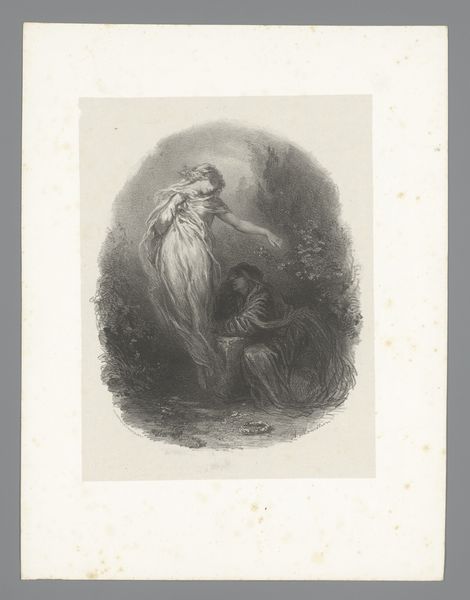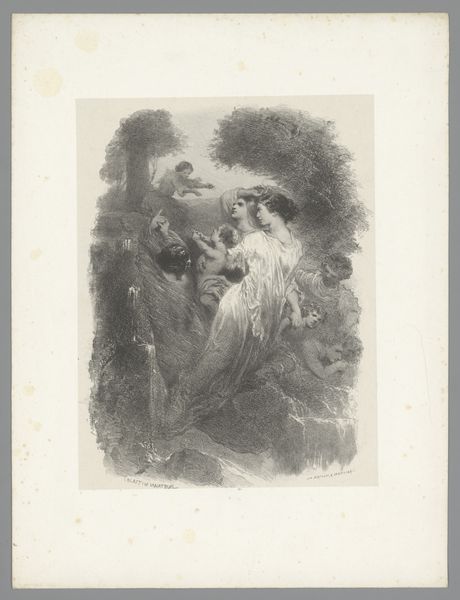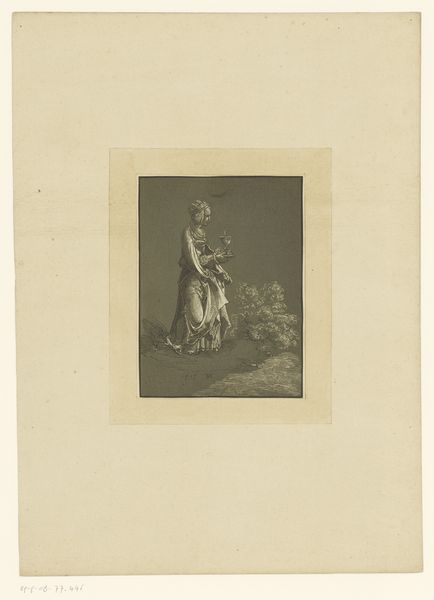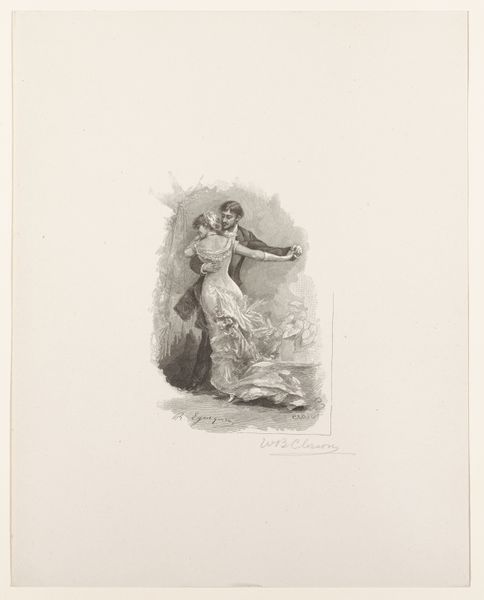
Dimensions: height 356 mm, width 274 mm
Copyright: Rijks Museum: Open Domain
Curator: Here we have Adolphe Mouilleron's "Seated Woman with Tambourine Under a Tree," an etching rendered in ink on paper, likely created between 1830 and 1880. It resides here at the Rijksmuseum. Editor: What strikes me first is the texture. The interplay of ink on paper creates a very tactile experience, even from afar. You can almost feel the roughness of the bark behind her, and the layers of her dress. Curator: Indeed, the use of etching allows for a remarkable gradation of tone. Observe the figure’s pose; its contrapposto suggests a self-aware elegance despite the apparently relaxed setting, a quality that underscores its Romanticist leanings. The composition guides the eye to move along diagonal vectors. Editor: The tambourine catches my eye as an essential element, hinting at social rituals and traditions that define her role. Was it merely about music-making, or could it carry ritualistic functions rooted in material conditions and social behaviors? I think we’re seeing class-based aesthetics interacting with performance art here. Curator: The instrument may well be allegorical; within its visual economy, the image operates as both a genre painting and a portrait. This ambivalence disrupts a singular reading; the work invites scrutiny beyond mere surface representation. The figure’s costume is critical as well. Editor: Right, the materiality of that costume also tells us a lot—from its embroidery to construction—reflecting local craftsmanship and the potential commodification of regional folk culture during that era. These patterns woven into her garment show specific means of production—hand-spun thread and dyed fabric of course. Curator: Perhaps the semiotic import of the tree acts as a witness, framing her figure as an arbiter of nature and tradition, both preserved within the artifice of representation itself. Editor: Thinking about the artist's production, did he source his materials locally? Who would have assisted with such intricate work, and where did his creative output position him within society? These aspects frame not just aesthetics, but social context. Curator: Mouilleron prompts us to confront the intersections between representation, symbolism, and formal constraint. Editor: Absolutely, understanding materiality, methods, and means of production enriches the discussion, and helps bridge art to labor practices, economy, and shared values.
Comments
No comments
Be the first to comment and join the conversation on the ultimate creative platform.

